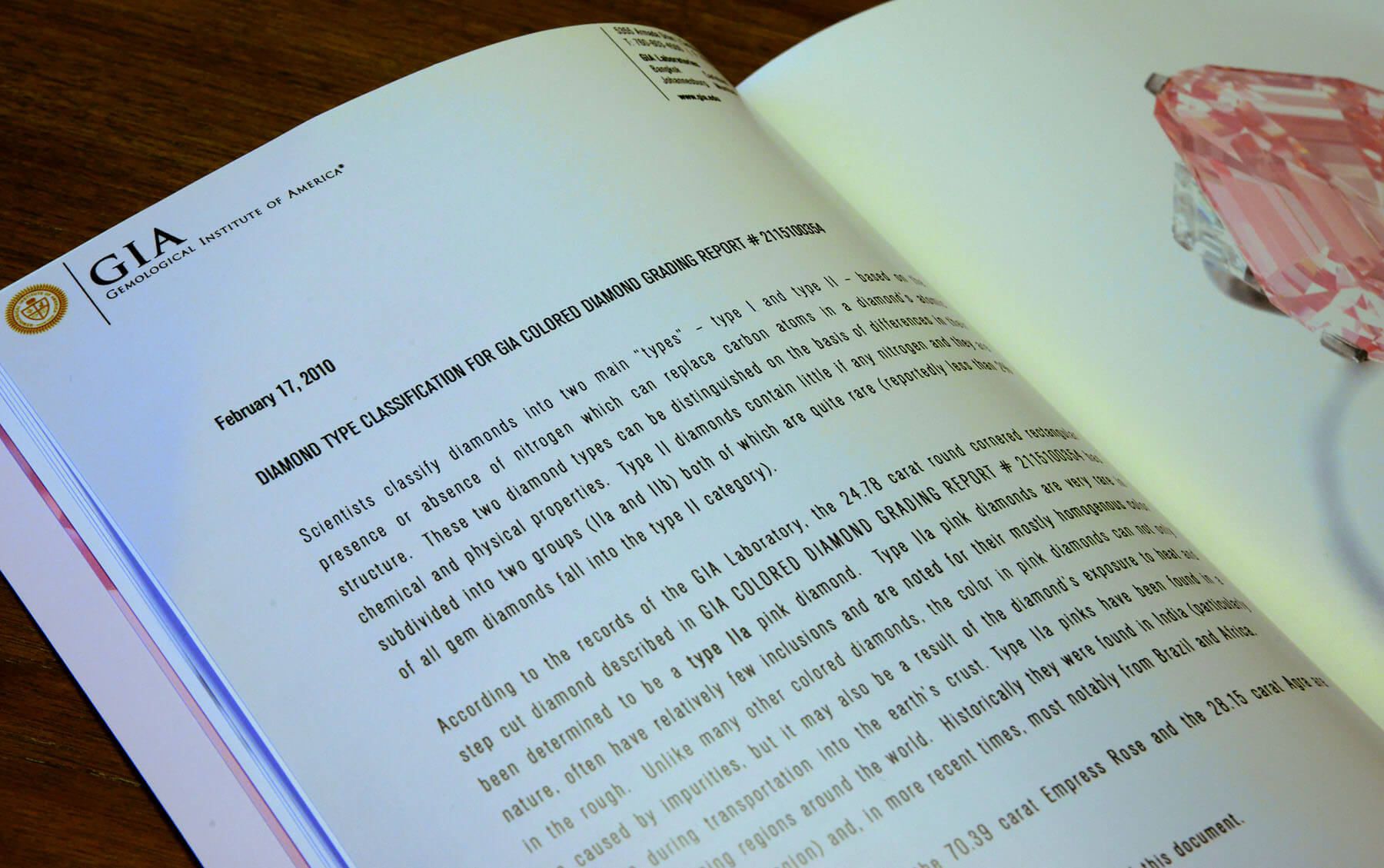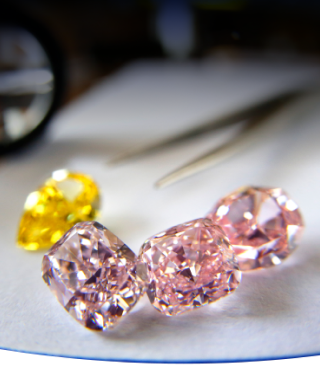The romance around Type IIa diamonds first began when scientists found a link between diamonds sourced from the legendary Golconda mine in India and the fact that stones hailing from this area were commonly Type IIa. As we all know by now, the collective assumption is that Type IIa diamonds – which are distinguished for their absence of nitrogen – are known to be more ‘white’ than most D color diamonds. Although it is not scientifically accurate, for the sake of our discussion let us assume that this common misconception is correct.
Once this romantic connection was widely spread by the industry and it became a symbol of ‘perfection’, wealthy consumers in the market for an important D color diamond were willing to pay more for stones that came with a Type IIa report. Auction houses embraced the trend, by adding the ‘Type’ report on the catalogue, which gave the stone another layer of supposed importance. Private buyers assume that if someone went through all the trouble of adding an additional ‘Type’ report, it must indicate significant added value.
And so in time, the myth spread to the point where meticulous customers have made the Type IIa title a prerequisite for buying a D color diamond and are willing to pay 5-10% more for the designation.
In the last decade, the trend migrated from colorless to the fancy color sphere. GIA positively responded to dealers’ requests and created a special ‘Type IIa report’ for fancy color pink diamonds. As mentioned before, auction houses love to publish this addition and the day that consumers insist for a Type IIa report for pinks is not far off in the future.
With the help of facts published in a 2002 GIA research study on pink diamonds [1], we would like to shed light on the differences between Type I and Type II pink stones, to help discerning professionals decide whether or not it is worth mentioning the Type IIa feature for pink diamonds.
Graining Lines
Most, if not all pink diamonds, have surface or ‘internal graining’ lines. The GIA describes the appearance of internal graining – in these specific terms: “internal reflective planes, parallel whitish bands, or as an overall whitish haze.”
The GIA’s conclusion stated that Type I pink diamonds were more likely to have surface graining, in contrast to Type II, which were more likely to appear with an overall haze and varying degrees of transparency. In the trade and in the jewelry world, pink diamonds with even minor transparency issues or haziness suffer from a serious decrease in price. On the other hand, pink diamonds with surface graining only – which are more likely to be Type Ia – are common and do not see a price decrease.
Color Undertone
When it comes to consumer color preferences, they typically favor a ‘cooler’ pink color, or what we refer to a ‘sweet’ color (as opposed to a ‘warm’ pink color with an orange undertones). From observing 1,490 pinks, the GIA stated the following conclusion: “…A larger quantity of ‘Type I’ pinks are often ’cooler’ in appearance than Type II. The opposite was noted for ‘Type II’ diamonds, which tend to be ‘warmer’ in appearance.”
Intensity
Intensity is one of the most important visual qualities for a fancy color diamond, which does have an impact on rarity. The GIA sought to determine if one type was more saturated than the other, and they concluded that “A higher percentage of Type I pink diamonds (1,166 samples out of 1,490) were found in the more saturated grade ranges of Fancy Deep, Fancy Intense, and Fancy Vivid.”
Clarity and Size
The only two features that were found in favor of Type IIa pink diamonds were in regard to their clarity and size. The following data “illustrates the breakdown by clarity grade for the 691 pink diamonds examined for this characteristic, overall and by type. Note that the (203) Type II samples were generally higher in clarity than the (488) Type I samples.”
Regarding size, “Type II pink diamonds tend to be larger than their Type I counterparts.”
Type II Color Loss (FCRF Findings):
We examined 46 pink and purplish pink stones from Fancy Light to Fancy Intense grades, within a 1-3 ct range (our team observed an equal amount of Type I and Type II stones). As we initially received an unofficial observation from a GIA gemologist in regard to color loss of Type IIa pink diamonds under a day light lamp, we wanted to confirm this phenomenon and test to see if the two types reacted the same way under a standard diamond light – the conclusions were surprising.
Out of 23 Type IIa pink diamonds, 19 stones showed a slight to significant loss of color when placed under a diamond light. We also found a connection between the typical Type IIa hazy internal graining and the loss of color under a day light lamp. From the Type Ia group, only three stones (out of 23) showed a slight color reduction.
Conclusions:
Between the two types of pinks, we can say that Type IIa pink diamonds tend to be larger in size and better in clarity, but lower in saturation. They are also warmer in color (with an orange undertone) and have internal graining, which in many cases exhibits haziness and loses saturation under a day light lamp.
Taking into account all the gemological features discussed in this article, there is no justification to emphasize the ‘type’ of any pink stone. Type IIa does not exhibit a unique quality that consumers should look for. Although sellers have the urge to display a wealth of information in the form of a ‘type report’ (which is occasionally used to create the false romantic link to Golconda historical diamonds), it is crucial that retailers distinguish between important and irrelevant factors. It is not suggested that one stone type is preferable to the other; rather, we are merely encouraging buyers to judge a stone based on its visible attributes and beauty.
[1] King J.M, Shigley J.E., Guhin S.S., Gelb T.H., Hall M. (2002) Characterization and grading of natural-color pink diamonds. G&G.


